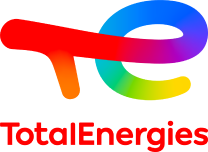Total’s CCUS activities
02/14/2018
Capturing and transporting CO2, storing it underground to prevent its release into the atmosphere and finding ways to exploit it.
[CCUS: Carbon Capture, Utilization and Storage]
This is CCUS, a future-oriented solution that will help reduce greenhouse gas emissions.
[OBJECTIVE 2050: capture from 5 to 10M tons of CO2 per year]
A solution with high stakes for the environment.
[Equivalent of emissions: more than three billion cars]
Total has been working on developing this technology for several years.
[1st technological chain of CCUS in Europe]
In this context, the Group has developed the first CCUS chain in Europe - located in Lacq, France - and has set up an investment fund under the Oil and Gas Climate Initiative that will provide $1 billion over 10 years.
[Oslo]
On October 2nd, 2017, Total signed a partnership agreement with Shell and Statoil in Oslo. Under the supervision of Gassnova, this project is the world's first commercial industrial CO2 storage program. Led by Total's R&D and developed with Exploration-Production, its commercialization will be overseen by the Gas, Renewables & Power branch.
[Trude Sundset, CEO of Gassnova]
Trude Sundset: In order to reach the Paris Agreement of 2°C, we need to see a large-scale deployment of CCS in order to meet that target. And also, this will be a cheaper way of achieving that target if we do large-scale deployment of CCS. I believe Total has the capability to do it and they have good knowledge in this field.
Total relies on the expertise of its Research and Development department to enhance the energy efficiency of these technologies and bring them to the industrial and commercial phase.
[CAPTURE]
When it comes to carbon capture, the R&D team's most advanced solution is chemical loop combustion, which helps lower the energy penalty and optimizes capture of CO2.
[Oxycombustion in chemical loop: better energy efficiency]
In the same year, R&D also joined the Mongstad Technology Center.
[Technology center Mongstad]
Located in Norway, the center is the world's largest development facility for CO2 capture technologies.
[TRANSPORT]
The R&D teams are also working on optimizing infrastructures for liquid CO2 transport.
[STORAGE]
As for carbon storage, the Group is well-known for its geosciences expertise, necessary when identifying suitable sites for carbon dioxide disposal.
[Dominique Copin, Senior Climate advisor, CCUS coordinator - Total Climate Strategy]
Dominique Copin: Only we know what goes on underground. Only we master the geosciences required for understanding how CO2 will disperse through the fields when we inject it.
Already, Total participated in the first industrial storage programs in the North Sea.
[About 1.7 million tons per year]
[VALORIZATION]
As for finding ways to exploit the CO2, the R&D team is already working on carbon conversion technologies that convert it into plastics, biofuels, lubricants, and cement.
[Bruno Pahlawan, VP R&D transverse programs - Total]
Bruno Pahlawan: In 20 to 30 years, to optimize economical models, we will have hubs dedicated to CO2 where we can capture, store and utilize it in ports and on industrial sites.
All these solutions will bring about a new industrial field and help reduce CO2 emissions.



